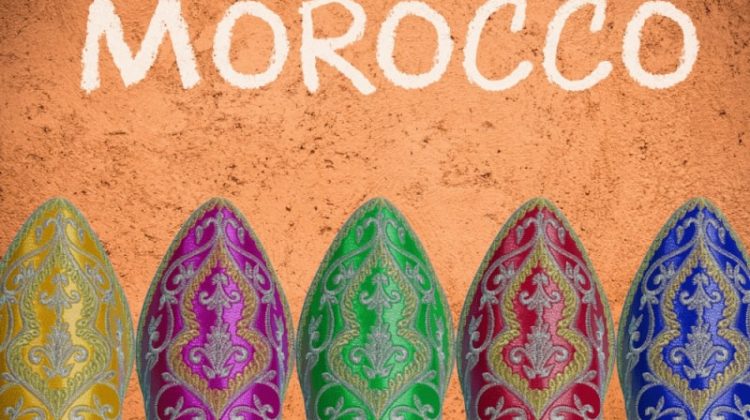
Take a walk in the medina of any Moroccan city and the tapping of metal, the smell of leather being tanned, and the vibrant colors of dyed scarves drying in the breeze hits all of your senses.
Morocco is a haven for traditional crafts and the workmanship is first class.
Here are just some of Moroccan crafts to look out for in the souks and museums.
Table of Contents
Zellige:
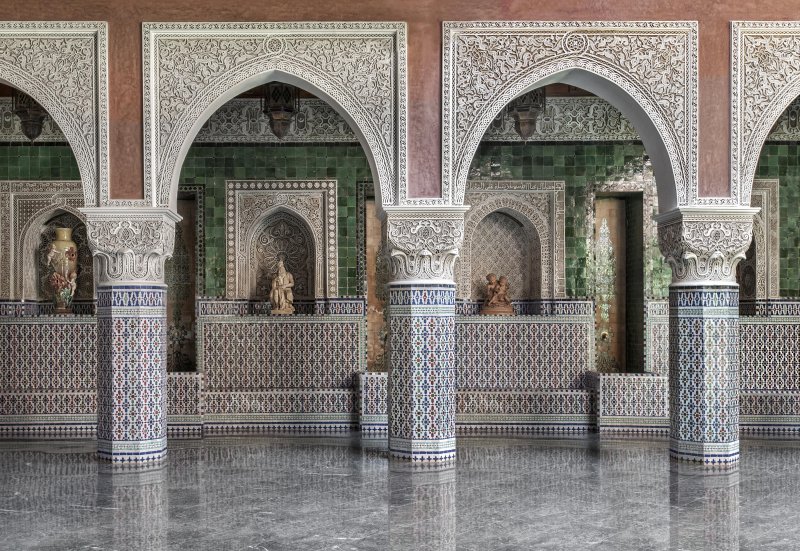
Moroccan handicraft tiles (zellige) tiles are considered as the most beautiful and the best quality tiles in the world.
They come in different shapes, colors, designs and texture patterns. Considered as one of a kind, this form of Islamic art can be used to ornament floors, walls, ceiling, fountains, tables and pools.
Found in Mosques and old Islamic building, these tiles are now used as decorations in all parts of the home: kitchen, bathroom, bedroom, pool…
You can compose your mosaic according to your interior, because it is suitable for all styles, from “countryside” to modern “arty” styles, combining different colors and complex geometric shapes.
Hand-Embroidery:
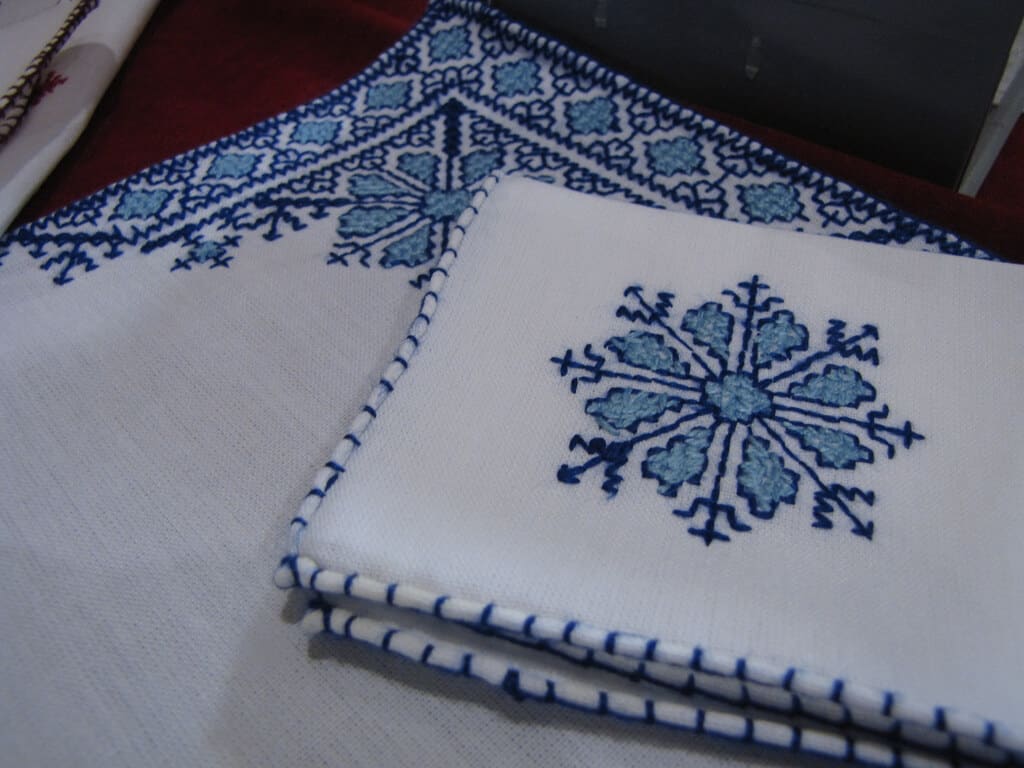
If you’ve ever visited Morocco, you most likely came across the beautiful Moroccan embroidery displayed in the medina’s tiny shops.
Before the twentieth century, Moroccan girls were taught embroidery by their mothers as a way to generate an income to their families.
Nowadays, this art is no longer taught as much as it used to be but that didn’t stop the embroidery lovers to help flourish this art and made it a wildly known Moroccan cultural tradition.
The Moroccan hand embroidery was influenced and inspired by the henna designs and Berber tattoos.
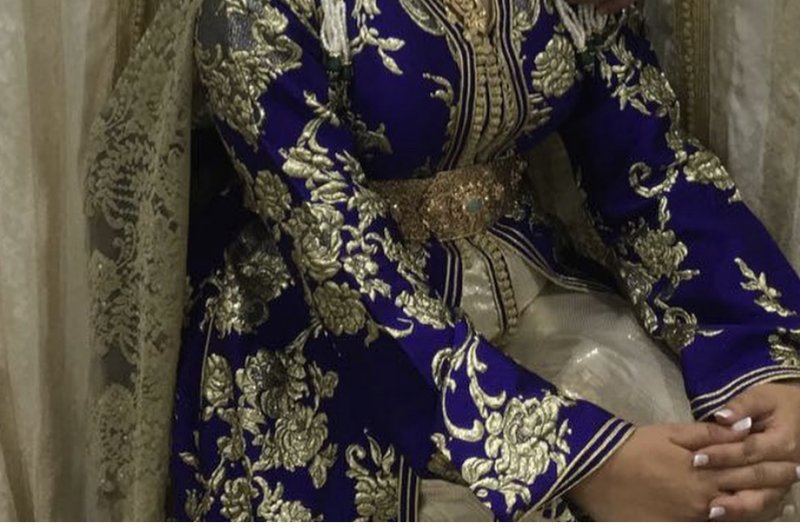
In Morocco there are 4 types of hand embroidery:
- Rabat embroidery: Named after the capital of Morocco, this type is mostly done on white cotton focuses more on to focus on one color embroidered in a decorated silk. The mostly used patterns are the floral or geometrical one.
- Fez embroidery: Unlike the Rabat embroidery, the Fesi embroidery uses blue or green as main colors and the stitches are a mix between straight and crossed forms. The special aspect about this embroidery is the fact that it has no knots or tangles; the fabric has the same design in both the front and the back.
- The gold threads: This type of embroidery is very popular in Fez. Mainly decorative it is used in different celebrations on festive clothes. Since it’s made on leather, silk or velvet clothing, the technique needs a lot of efforts and is made by male artisans.
- Berber embroidery: When tattoos stopped being a Berber customary, the Berber women started embroidering their headscarves using bright colors on dark backgrounds, creating unique and beautiful designs.
Related Post: Moroccan Embroidery
Ceramics
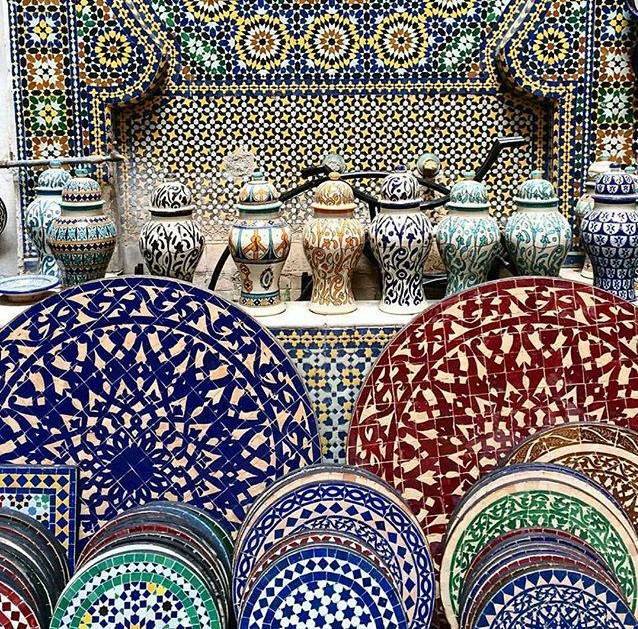
In Moroccan legend the ground a potter works on is sacred and should not be taken over by another. From antique dishes created in Fez to modern tagine pots in the souks, the glazing, designs and colours are beautiful.
Take a look at the tiles in buildings for more exquisite craftsmanship. The National Craft Museum in Rabat is an excellent place to see ceramics and other crafts.
Related Post: Moroccan Ceramics
Jewelry
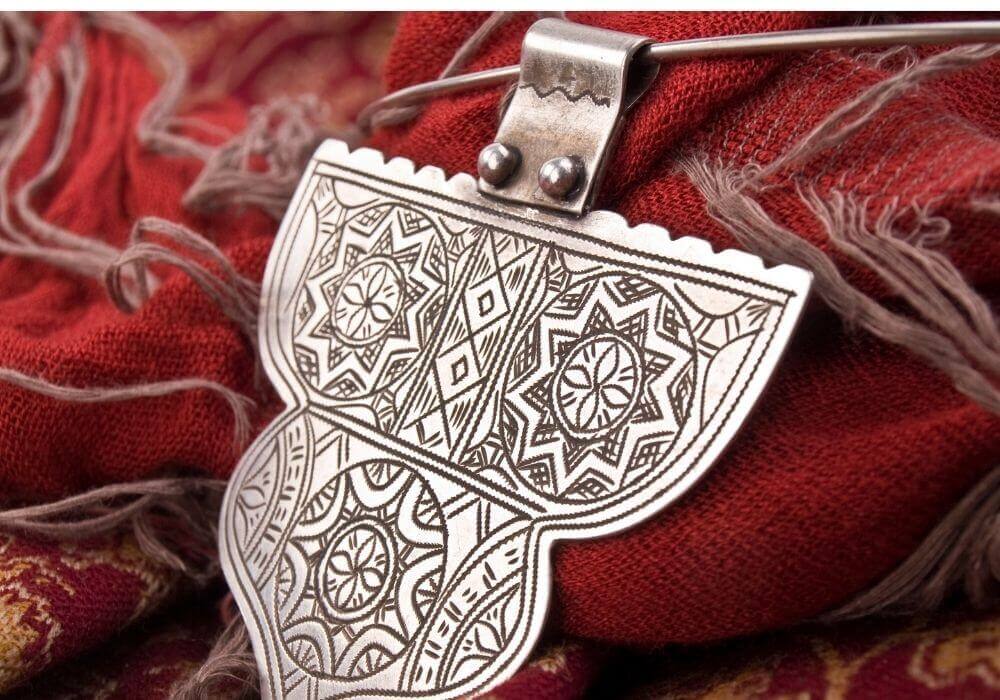
Moroccan jewelry reflects different tribal traditions. Many centuries ago, the jewelry was made by Jewish craftsmen since Muslims wouldn’t touch silver and gold back then.
As one of the richest and most beautiful expressions of Moroccan culture and style, the traditional jewelries were originally worn by the brides during their wedding.
Large necklaces made out of silver coins and silver bracelets with baroque and Berber symbolic designs, this exquisite heritage can be found in tiny shops in the old Medinas of Tiznit, Essaouira, Marrakech and Fez.
Combining both gold and precious stones such as rubies and emerald the necklaces, earrings or bracelets can also have the Hand of Fatima as a pendant, symbol to ward off the evil eye.
Related Post: Moroccan Jewelry
Leather
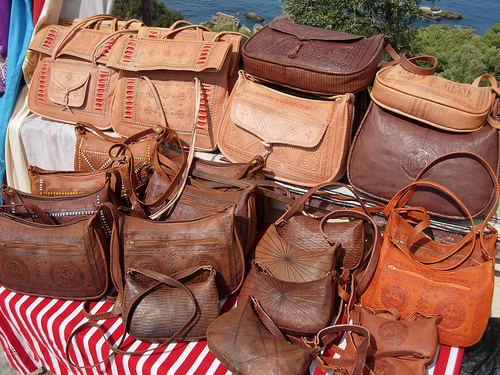
While in Morocco, visiting Fez’s tanneries is a must! The city’s name has become synonymous of the world’s finest leatherwork. Shoes, bags, purses, jackets and Moroccan slippers you’ll find the world’s most authentic leather items.
Home of the ancient leather tanneries, Fez is famous for the Chouara Tannery which is thousand years old. The tanners process the hides of different animal such as goats, sheep, camels and cows turning them into high quality items products, sold in the shops of the medina.
Every hide is sodden for three days in tanning vessels full of a mixture of water, salt, cow urine and quicklime.
Once the hide is ready (lost its fat and hair) it is soaked in a different vessel containing pigeon poop and water, the mixture helps soften the hide. The tanner then starts kneading the hide until it becomes as soft as desired.
The hide is then putted in dying pits full of indigo, henna, cedar wood, mint, saffron or other natural vegetable dye, depending of the wanted color.
Before selling it to craftsmen who turn it into slippers, wallets, furniture or other leather accessories, the hide is taken out to dry under the sun.
Related Post : Discover Moroccan Leather
Metal Work
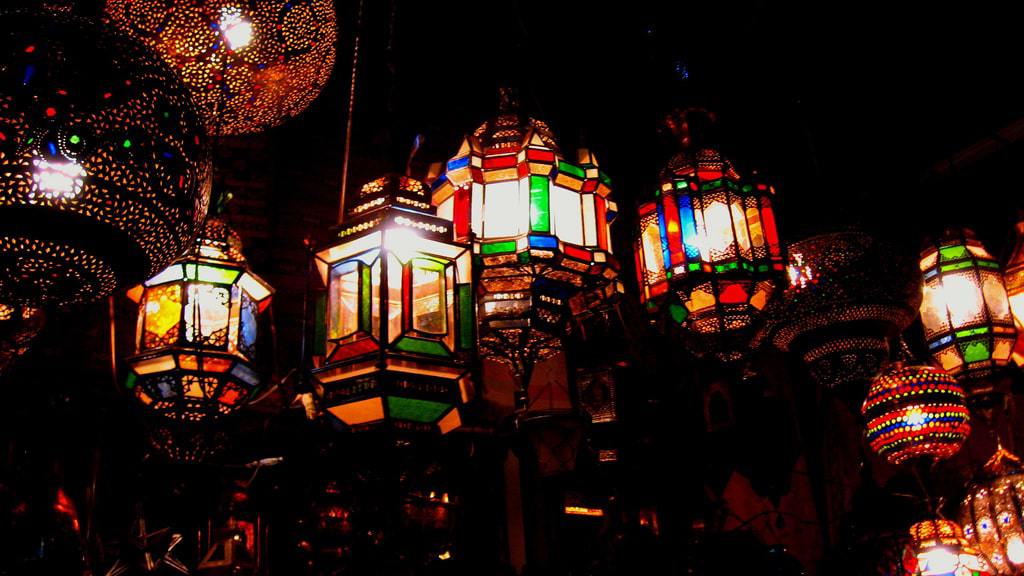
In Morocco there are copper platters reflecting the sun in the souks, and magical lanterns. The metal workers craft many intricate household items from pewter jugs to copper and brass bowls.
Look closer in the souk and you may find some of the locals making lamps or candle holders. There are jewelry makers too, and some beautifully worked designs.
In Morocco the crafts are a highlight of any travel experience and part of the heritage of North Africa.
Take time to look closely in the souks and medinas to see ancient traditions still being carried on today.